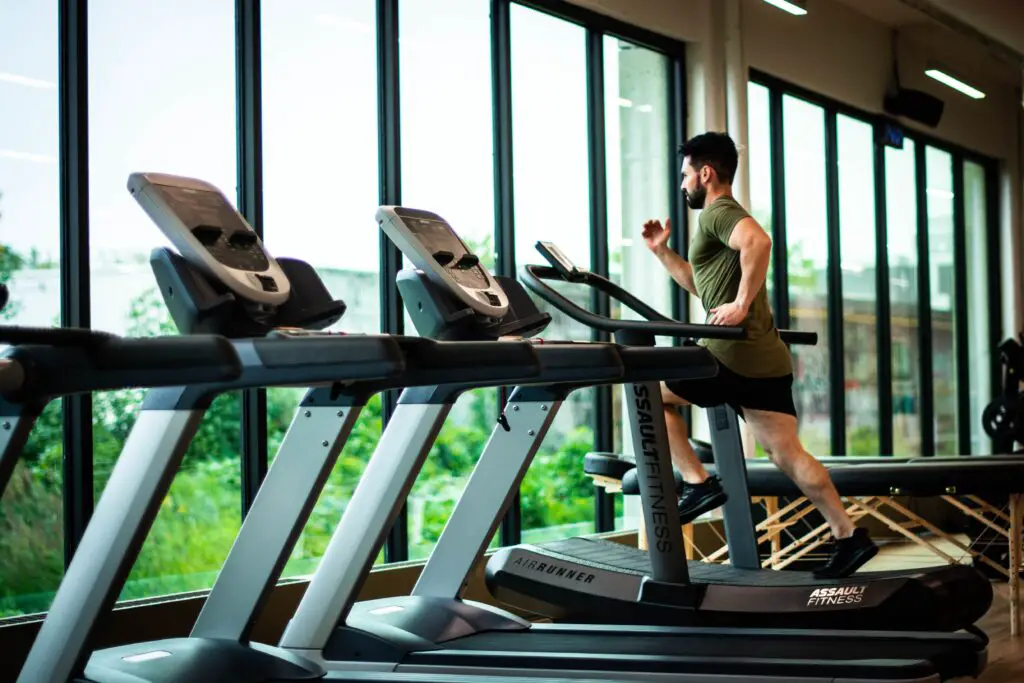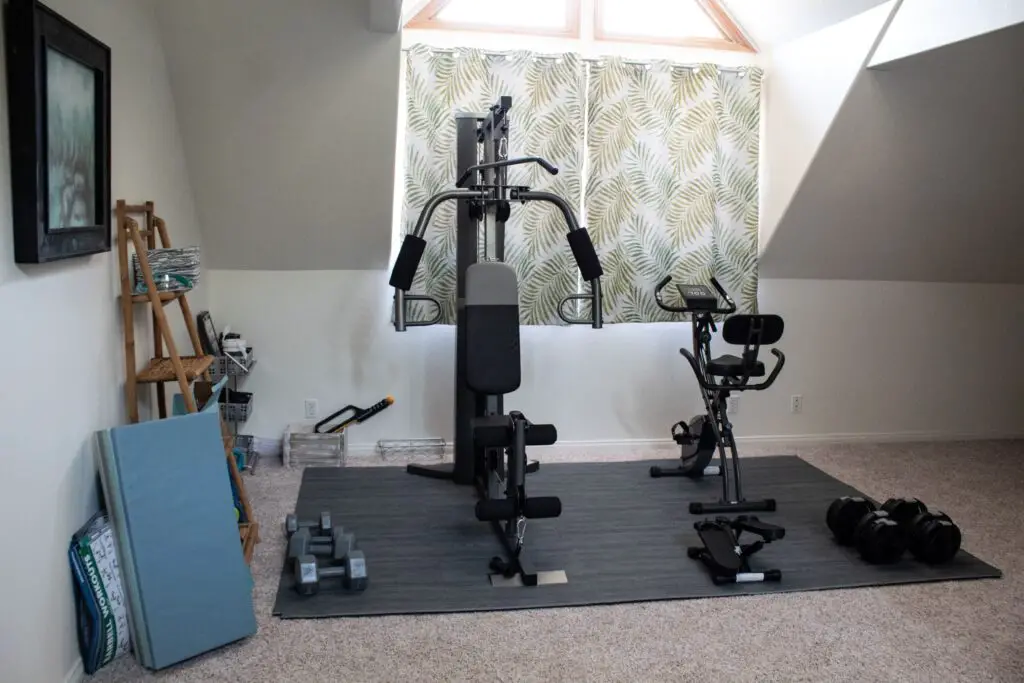Are you tired of battling traffic and crowded gyms to squeeze in a workout? Imagine having your dedicated fitness space available anytime, without leaving your home. Transforming your basement into a home gym can be the perfect solution. Not only does it provide convenience and privacy, but it also allows you to create a space tailored to your fitness needs.
In this comprehensive guide, we will take you through the step-by-step process of transforming your basement into a home gym. From planning and preparation to equipment setup and safety measures, we’ll cover everything you need to know to create an ideal workout space in your basement. So, let’s get started on this exciting journey toward building your dream home gym.
I. Planning and Preparation

Before diving into the renovation process, it’s important to plan and prepare adequately. This phase sets the foundation for a successful transformation of your basement into a home gym.
Assessing the available space: Measure the dimensions of your basement and identify any obstacles or limitations that may affect the gym layout and equipment placement. Consider factors such as ceiling height, windows, support columns, and access points.
Determining the gym layout and equipment: Set clear fitness goals and requirements to guide your equipment selection. Research different types of gym equipment and choose the ones that align with your fitness preferences. Consider factors such as cardio machines, strength training equipment, and storage needs.
Budgeting and obtaining necessary permits: Estimate the costs associated with equipment, renovation, and utilities. Create a budget to ensure you stay within your financial limits. Additionally, check your local building codes and obtain any necessary permits to comply with regulations.
II. Basement Renovation

Once you’ve completed the planning phase, it’s time to start renovating your basement to create a suitable environment for a home gym.
Clearing and decluttering: Remove any existing items and furniture from the basement. Properly dispose of unwanted items to create a clean slate for your gym transformation.
Inspecting and repairing the basement: Thoroughly check for moisture, leaks, and structural issues that may affect the integrity of your gym space. Address any problems promptly by hiring professionals or undertaking necessary repairs yourself.
Installing proper insulation and ventilation: Basements can be prone to temperature fluctuations and poor air circulation. Install insulation to maintain temperature control and ensure proper ventilation to keep the air fresh during workouts.
III. Electrical and Lighting Considerations

Proper electrical and lighting arrangements are crucial for an efficient and safe home gym setup.
Hiring a professional electrician: Unless you have experience with electrical work, it’s best to hire a professional to handle the electrical aspects of your basement gym. They will ensure that all wiring and fixtures meet safety standards.
Planning the electrical layout: Determine the location of power outlets based on the equipment you’ll be using. Consider the number and positioning of outlets to accommodate various machines and accessories. Assess lighting needs and select suitable fixtures for optimal illumination.
Installing electrical wiring and fixtures: With the help of an electrician, add power outlets in strategic locations for your gym equipment. Install appropriate lighting fixtures to ensure a well-lit and motivating workout space.
IV. Flooring and Wall Treatment

Choosing the right flooring materials and wall treatments enhances both the aesthetics and functionality of your home gym.
Selecting suitable flooring materials: Evaluate different flooring options, such as rubber, vinyl, or foam, based on your workout preferences and budget. Consider factors like durability, shock absorption, and ease of maintenance.
Preparing the basement floor: Clean and level the surface before installing the chosen flooring material. Address any moisture or waterproofing concerns to prevent damage and maintain a safe workout area.
Installing the chosen flooring material: Follow the manufacturer’s instructions to properly install the flooring material. Ensure a secure and even installation, providing a stable surface for your equipment and a comfortable workout experience.
Wall treatment options: Consider painting the walls with moisture-resistant paint to prevent dampness. Mirrors can be added to create an illusion of space and assist with form correction during exercises. Wall-mounted equipment like hooks or racks can help with storage and organization.
V. Equipment Setup

Now that your basement is renovated and ready, it’s time to bring in and arrange your gym equipment.
Assembling and arranging gym equipment: Follow the manufacturer’s instructions to assemble each piece of equipment correctly. Organize your equipment strategically, ensuring ease of use and safety during workouts. Consider leaving ample space for stretching and floor exercises.
Mounting equipment securely: If you have wall-mounted equipment, such as pull-up bars or suspension trainers, install them securely according to manufacturer guidelines. Ensuring equipment stability and proper weight distribution is crucial for user safety.
VI. Safety Measures
Safety should always be a top priority when setting up a home gym. Implement these measures to create a safe workout environment.
Adding safety features: Install rubber mats or padding around heavy equipment to prevent floor damage and reduce noise. Place emergency equipment such as fire extinguishers and first aid kits in easily accessible locations.
Ensuring proper ventilation and air quality: Install fans or ventilation systems to maintain fresh air circulation in your basement gym. Regularly check humidity levels and control moisture to prevent mold and mildew growth.
VII. Finishing Touches

Adding final touches to your home gym can make the space more appealing and motivational.
Adding storage solutions: Install shelves or cabinets to keep your equipment organized and easily accessible. Designate space for towels, water bottles, and other workout accessories for a clutter-free environment.
Incorporating motivational elements: Hang inspirational quotes or posters that resonate with your fitness journey. Personalize the space with decor that encourages workouts, such as artwork or motivational images.
VIII. Maintenance and Upkeep
Regular maintenance ensures your home gym remains in optimal condition, allowing you to enjoy it for years to come.
Establishing a cleaning routine: Sweep or vacuum the floor regularly to keep it clean from dust and debris. Wipe down equipment and mirrors to maintain cleanliness and hygiene.
Inspecting and maintaining equipment: Regularly check for wear and tear or malfunctioning parts on your gym equipment. Refer to manufacturer guidelines for maintenance instructions and consider scheduling professional servicing if needed.
Conclusion
Transforming your basement into a home gym is an exciting project that can provide convenience, privacy, and personalized fitness opportunities. By following this step-by-step guide, you can create a dedicated workout space that meets your fitness goals. Remember to plan carefully, renovate thoughtfully, and prioritize safety throughout the process. Now, it’s time to start transforming your basement into the home gym of your dreams!
FAQs (Frequently Asked Questions)
1. How long does it take to transform a basement into a home gym?
The duration depends on various factors, including the size of the basement, the complexity of the renovation, and any required permits. On average, the process can take several weeks to a few months.
2. Do you need professional help with the renovation?
While some aspects can be handled as DIY projects, seeking professional assistance is recommended, especially for electrical work and structural inspections. Hiring experts ensures safety and compliance with building codes.
3. How much does it cost to transform a basement into a home gym?
The cost varies based on factors like the size of the basement, chosen equipment, renovation requirements, and personal preferences. It’s essential to create a budget that accounts for equipment, renovation materials, permits, and professional services.

